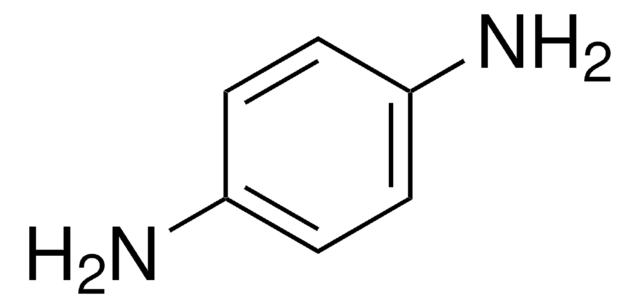437522
2-Propanol
≥99.5%, ACS reagent
Synonym(s):
sec-Propyl alcohol, IPA, Isopropanol, Isopropyl alcohol
About This Item
Recommended Products
product name
2-Propanol, ACS reagent, ≥99.5%
grade
ACS reagent
Quality Level
vapor density
2.1 (vs air)
vapor pressure
33 mmHg ( 20 °C)
44 mmHg ( 25 °C)
Assay
≥99.5%
form
liquid
autoignition temp.
750 °F
expl. lim.
2.0-12.7 %, 93 °C
impurities
≤0.0001 meq/g Titr. acid or base
≤0.002% carbonyl compounds (propionaldehyde or acetone)
≤0.2% water
evapn. residue
≤0.001%
color
APHA: ≤10
refractive index
n20/D 1.377 (lit.)
bp
82 °C (lit.)
mp
−89.5 °C (lit.)
solubility
H2O: passes test
density
0.785 g/mL at 25 °C (lit.)
SMILES string
CC(C)O
InChI
1S/C3H8O/c1-3(2)4/h3-4H,1-2H3
InChI key
KFZMGEQAYNKOFK-UHFFFAOYSA-N
Looking for similar products? Visit Product Comparison Guide
Application
- As a solvent in the synthesis of di- and trisubstituted ortho biaryls by Suzuki-Miyaura cross-coupling reaction.
- As an alternate solvent to benzene in the analysis of total carbonyl compounds in heated and frying oils.
- As a reaction medium in the preparation of cyclic ureas by reacting CO2 with diamines in the presence of pure cerium oxide (CeO2).
Signal Word
Danger
Hazard Statements
Precautionary Statements
Hazard Classifications
Eye Irrit. 2 - Flam. Liq. 2 - STOT SE 3
Target Organs
Respiratory system
Storage Class Code
3 - Flammable liquids
WGK
WGK 1
Flash Point(F)
53.6 °F - closed cup
Flash Point(C)
12.0 °C - closed cup
Personal Protective Equipment
Regulatory Listings
Regulatory Listings are mainly provided for chemical products. Only limited information can be provided here for non-chemical products. No entry means none of the components are listed. It is the user’s obligation to ensure the safe and legal use of the product.
FSL
Group 4: Flammable liquids
Alcohols
Hazardous rank II
ISHL Indicated Name
Substances Subject to be Indicated Names
ISHL Notified Names
Substances Subject to be Notified Names
JAN Code
437522-4L:4548173150185
437522-1L:
437522-BULK:
437522-16L:
437522-VAR:
437522-4X4L:4548173150192
Choose from one of the most recent versions:
Already Own This Product?
Find documentation for the products that you have recently purchased in the Document Library.
Customers Also Viewed
Our team of scientists has experience in all areas of research including Life Science, Material Science, Chemical Synthesis, Chromatography, Analytical and many others.
Contact Technical Service


![Poly[1-[4-(3-carboxy-4-hydroxyphenylazo)benzenesulfonamido]-1,2-ethanediyl, sodium salt] technical grade](/deepweb/assets/sigmaaldrich/product/structures/225/271/4c744f34-c806-457e-a467-9f24898a573c/640/4c744f34-c806-457e-a467-9f24898a573c.png)



